NSFK Officer's Kepi
CATEGORY: Version
SKU: 54.GOR.01.01.003.000
Estimated market value:
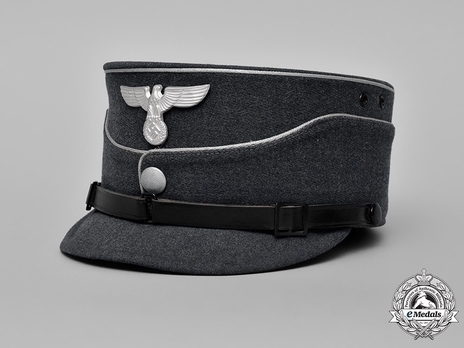
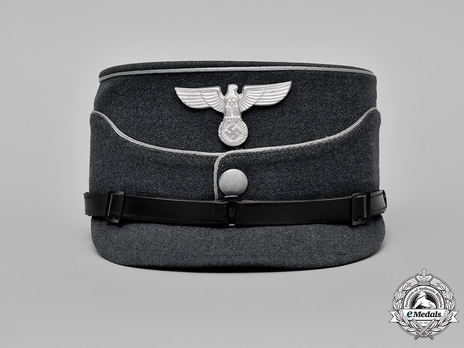
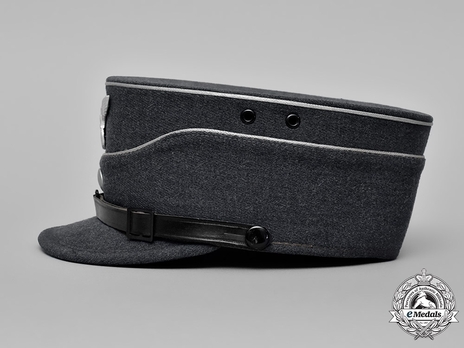
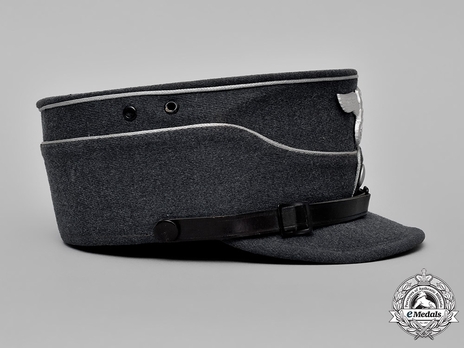
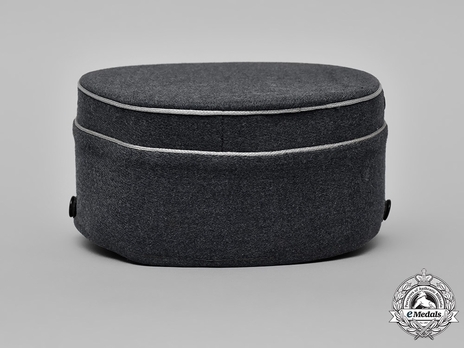
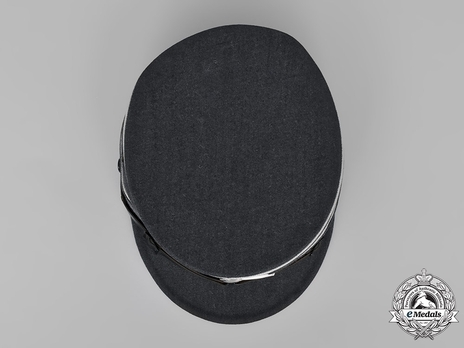
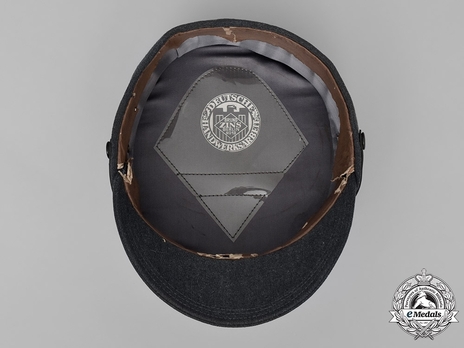
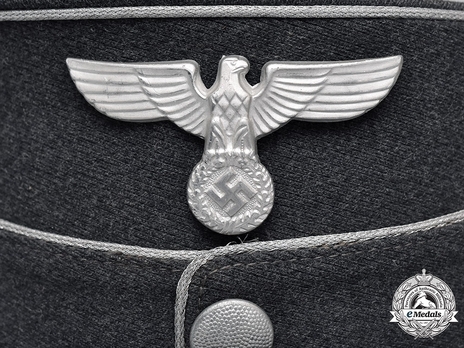
Estimated market value:
Of multi-piece construction, fabricated with reinforced sidewalls with a visor towards, all in grey herringbone twill wool, including the sidewalls and the circular “coffee can” style top. Along the sidewalls and along the crown of the cap is decorated with silver aluminum embroidered tresse to signify Officer rank. The front is decorated with a well-detailed silvered aluminum eagle insignia on the peak. There are ventilation holes with black reinforcing eyelets on either side. The black finished leather chinstrap rests upon the protruding visor, composed of two pieces - the two ends are held together via a rectangular metal loop in the centre, with each strap having its own adjustable buckle, held in place by a black magnetic button. The underside of the visor is also in grey twill wool, while the sweatband is constructed of a brownish-orange synthetic leather, the ends pinned together on the right side of the cap. The interior of the sidewall of the kepi is lined in a grey coloured linen, with a clear vinyl maker’s diamond sewn to the crown, with a maker’s mark reading “Deutsche Handwerksarbeit - Bruno Zins Berlin, No18”. It measures 185 mm (w) x 230 mm (h), with visible wear to the sweatband, but with the exterior well preserved, in overall extremely fine condition.
The NSFK (Nationalsozialistisches Fliegerkorps = National Socialist Flyers Corps) was originally established in January of 1932. However, in March of 1933, the NSFK was, together with all other air sports organisations, absorbed into the newly founded DLV (Deutscher Luftsportverband = German Air Sports Association), an organisation that was used as a means to secretly rebuild the German air force under the guise of a civilian association. After the Luftwaffe was officially unveiled in 1935, the DLV was dissolved in 1937. On April 17, 1937, the NSFK was re-established as a civilian and paramilitary air sports organisation.
The NSFK’s mission was to provide the means for (young) Germans to pursue an interest in flying, and thus to secure new blood for the Luftwaffe. For this reason, the organisation worked closely with the aviation sub-section of the Hitler Youth.
Membership in the NSFK was on a voluntary basis. Members were forbidden from holding simultaneous SA, SS, or NSKK membership.
NSFK aviation training was no substitute for training in the Luftwaffe if a member decided to join the military. Since Luftwaffe planes were motorised without exception, the NSFK was the only organisation to teach its members how to fly gliders and hot air balloons.
The Kepi used by the NSFK is in the style of the SA Kepi. It was made from blue-grey stiff cloth. It has two flaps sewn to the body of the cap. A button is placed where the two flaps overlap in the front, above which a metal cap eagle emblem was worn. There are two ventilation grommets per side above the flaps. The interior features is a celluloid sweat shield and a brown sweatband.
The chin strap was made of black leather with two black metal buckets. Contrary to the one worn by the SA, this one is not of the divided type, although exceptions are known to exist.
The cap worn by the Korpsführer (Corps Leader) has gold-coloured piping on the crown and flaps. The piping for officer ranks is silver-coloured and made from aluminum, whereas the piping for enlisted ranks is golden-yellow cloth piping.
Higher officer ranks, starting at the rank of Standartenführer, wore tress in addition to the piping along the edges of the flaps. Even though the tress patterns were supposed to be standardised, unofficial tress patterns are known to exist.
Gruppenführer and Obergruppenführer wore a 20mm wide silver-coloured tress with a zigzag pattern.
Oberführer and Brigadeführer wore a 15mm wide silver-coloured tress with three horizontal stripes as part of the pattern.
Standartenführer and Ehrenführer (Honorary Leaders) wore a 10mm wide silver-coloured tress with two horizontal stripes as part of the pattern. Leaders of lower rank acting as a Leader of a Standarte were also authorised to wear this tress.

Comments
Sign in to comment and reply.


Scroll Top